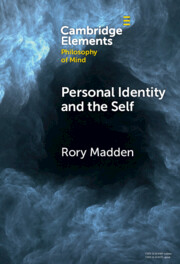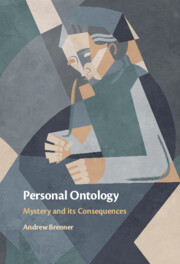Refine search
Actions for selected content:
57 results
Chapter 8 - Cognizing Regulative Ideas
- from Part II - A Kantian Account of Thought Experiment
-
- Book:
- Kierkegaard and the Structure of Imagination
- Published online:
- 26 September 2025
- Print publication:
- 16 October 2025, pp 119-137
-
- Chapter
- Export citation
6 - Corporate Existence as a Problem of Starting Assumptions about Members’ Existence
-
- Book:
- A Theory of International Organizations in Public International Law
- Published online:
- 26 September 2025
- Print publication:
- 16 October 2025, pp 133-158
-
- Chapter
- Export citation
A Philosophical Metabolism Problem: Undermining of Egoistic Reasons
-
- Journal:
- Utilitas , First View
- Published online by Cambridge University Press:
- 23 July 2025, pp. 1-16
-
- Article
-
- You have access
- Open access
- HTML
- Export citation
Chapter 8 - Adolescence
- from Part II - The Growth of Meaning
-
- Book:
- The Development and Organization of Meaning
- Published online:
- 11 June 2025
- Print publication:
- 26 June 2025, pp 103-116
-
- Chapter
- Export citation
2 - Clothing, Identity, and Communication
-
- Book:
- A Philosopher Looks at Clothes
- Published online:
- 08 May 2025
- Print publication:
- 05 June 2025, pp 26-56
-
- Chapter
- Export citation
19 - The Experimental Jurisprudence of Persistence through Time
- from Part II - Introductions
-
-
- Book:
- The Cambridge Handbook of Experimental Jurisprudence
- Published online:
- 17 May 2025
- Print publication:
- 05 June 2025, pp 293-305
-
- Chapter
- Export citation

Personal Identity and the Self
-
- Published online:
- 29 November 2024
- Print publication:
- 02 January 2025
-
- Element
-
- You have access
- Open access
- HTML
- Export citation
8 - It’s the Group, Not Just the Individual
- from Part II - Drivers of the Exclusion–Extremism Link
-
-
- Book:
- Exclusion and Extremism
- Published online:
- 16 May 2024
- Print publication:
- 23 May 2024, pp 166-183
-
- Chapter
- Export citation
When Suicide is not a Self-Killing: Advance Decisions and Psychological Discontinuity—Part I
-
- Journal:
- Cambridge Quarterly of Healthcare Ethics / Volume 34 / Issue 3 / July 2025
- Published online by Cambridge University Press:
- 24 April 2024, pp. 455-466
-
- Article
-
- You have access
- Open access
- HTML
- Export citation
1 - Introduction
-
- Book:
- Personal Ontology
- Published online:
- 07 March 2024
- Print publication:
- 14 March 2024, pp 1-18
-
- Chapter
- Export citation

Personal Ontology
- Mystery and Its Consequences
-
- Published online:
- 07 March 2024
- Print publication:
- 14 March 2024
Master Narratives, Self-Simulation, and the Healing of the Self
-
- Journal:
- Journal of the American Philosophical Association / Volume 10 / Issue 1 / March 2024
- Published online by Cambridge University Press:
- 12 April 2023, pp. 153-167
-
- Article
- Export citation
Citizenship, Identity, and Veiling: Interrogating the Limits of Article 8 of the European Convention on Human Rights in Cases Involving the Religious Dress of Muslim Women
-
- Journal:
- Journal of Law and Religion / Volume 38 / Issue 1 / January 2023
- Published online by Cambridge University Press:
- 19 January 2023, pp. 81-107
-
- Article
-
- You have access
- Open access
- HTML
- Export citation
Personal identity: How it moderates the relation between social identity and workplace performance
-
- Journal:
- Journal of Management & Organization / Volume 30 / Issue 6 / November 2024
- Published online by Cambridge University Press:
- 22 December 2022, pp. 1845-1872
-
- Article
- Export citation
Chapter 8 - The Demand for Authenticity
- from Part III - Politics and Authenticity
-
- Book:
- Heidegger's Social Ontology
- Published online:
- 18 February 2023
- Print publication:
- 24 November 2022, pp 225-257
-
- Chapter
- Export citation
Brain-State Transitions, Responsibility, and Personal Identity
-
- Journal:
- Cambridge Quarterly of Healthcare Ethics / Volume 31 / Issue 4 / October 2022
- Published online by Cambridge University Press:
- 18 November 2022, pp. 453-463
-
- Article
-
- You have access
- Open access
- HTML
- Export citation
Assessor Relative Conativism
-
- Journal:
- Journal of the American Philosophical Association / Volume 10 / Issue 1 / March 2024
- Published online by Cambridge University Press:
- 08 September 2022, pp. 96-115
-
- Article
-
- You have access
- Open access
- HTML
- Export citation
8 - Personhood across the Lifespan
- from Part II - Ageing and Morality
-
-
- Book:
- The Cambridge Handbook of the Ethics of Ageing
- Published online:
- 23 August 2022
- Print publication:
- 04 August 2022, pp 105-117
-
- Chapter
- Export citation
Chapter 4 - From Here to Eternity
-
-
- Book:
- Kierkegaard's <I>The Sickness Unto Death</I>
- Published online:
- 26 August 2022
- Print publication:
- 21 July 2022, pp 61-78
-
- Chapter
- Export citation
Précis of Kant on Self-Knowledge and Self-Formation and Replies to Critics
-
- Journal:
- Kantian Review / Volume 27 / Issue 3 / September 2022
- Published online by Cambridge University Press:
- 04 July 2022, pp. 491-508
- Print publication:
- September 2022
-
- Article
-
- You have access
- Open access
- HTML
- Export citation
